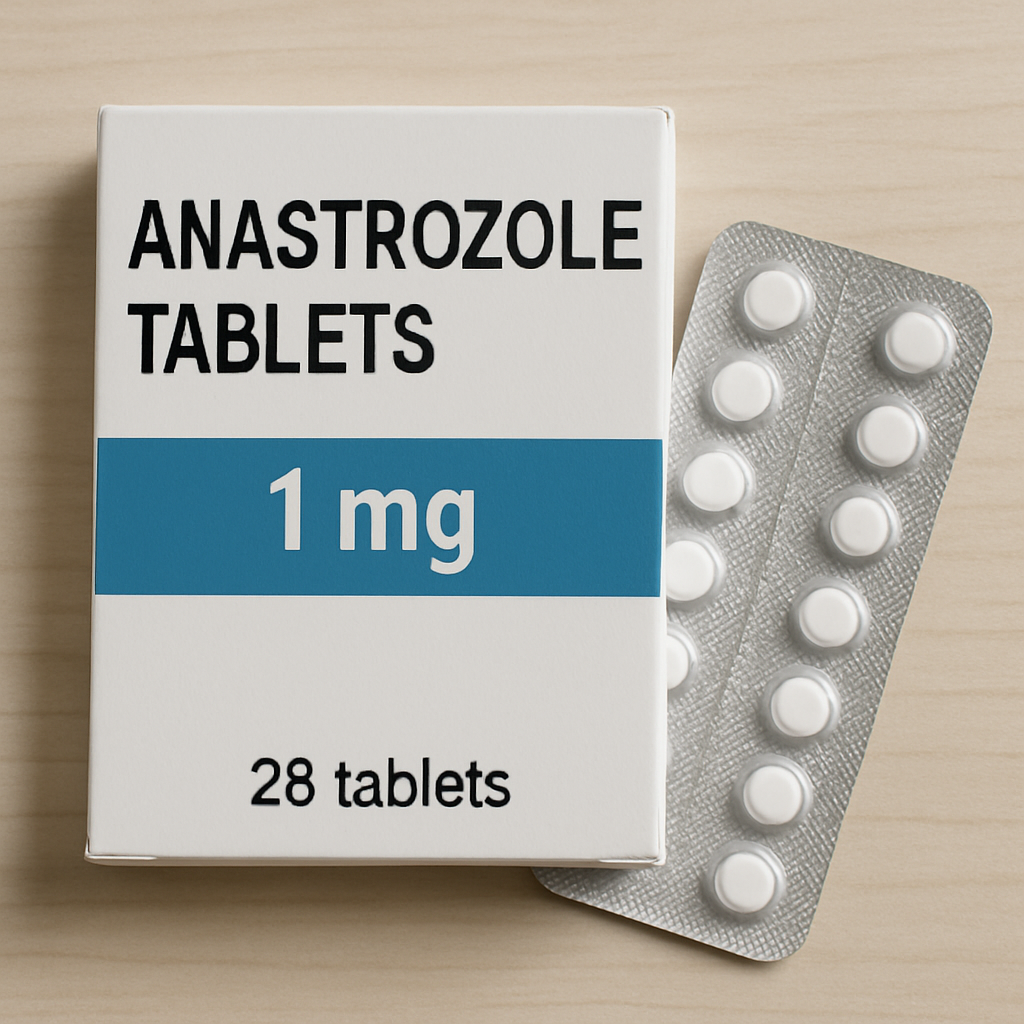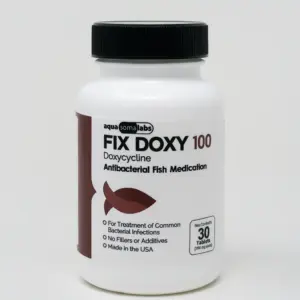Anastrozole is a medication that plays a crucial role in managing estrogen levels in men, especially those undergoing testosterone replacement therapy (TRT). However, determining the right dosage can be a challenging task. This article provides guidance on the appropriate anastrozole dosage for men, particularly in the context of testosterone therapy.

Anastrozole is an aromatase inhibitor, which means it works by blocking the enzyme aromatase. This enzyme is responsible for converting testosterone into estrogen. By inhibiting this process, anastrozole helps lower estrogen levels in the body.
Mechanism of Action
Anastrozole effectively binds to the aromatase enzyme, preventing it from converting androgens into estrogen. This action is particularly beneficial for individuals whose bodies produce excessive estrogen, either naturally or through external testosterone supplementation. This blockade helps in maintaining a hormonal balance critical for overall health.
Benefits of Anastrozole
The primary benefit of anastrozole is its ability to control estrogen levels, which can prevent various unwanted side effects associated with high estrogen. These include not just physical symptoms like gynecomastia but also psychological symptoms such as mood swings. Additionally, by maintaining proper estrogen levels, anastrozole can improve the effectiveness of testosterone therapy.
Who Should Consider Anastrozole
Anastrozole is typically recommended for men undergoing testosterone replacement therapy who experience symptoms of elevated estrogen levels. It may also be suggested for those who have a history of estrogen-related side effects. However, it’s not suitable for everyone and should only be used under medical supervision.
Why Men Use Anastrozole
Men undergoing testosterone therapy often use anastrozole to prevent the side effects of elevated estrogen levels, such as gynecomastia (breast tissue enlargement), water retention, and mood swings. Proper management of estrogen levels is crucial for the overall effectiveness of testosterone therapy.
Common Side Effects of High Estrogen
Elevated estrogen can lead to a range of symptoms that affect both physical and mental health. Physically, men might notice an increase in body fat, particularly around the chest area, and experience water retention that can cause bloating. Mentally, high estrogen can contribute to mood instability and irritability.
The Role of Anastrozole in Managing Side Effects
By reducing the conversion of testosterone to estrogen, anastrozole helps mitigate these side effects. This can enhance the quality of life for men on testosterone therapy, allowing them to focus on the benefits of their treatment without the distraction of unwanted symptoms. It also supports maintaining a healthy balance in their hormonal profile.
Long-term Benefits in Testosterone Therapy
In the context of long-term testosterone therapy, maintaining stable estrogen levels with anastrozole can promote more consistent results. This includes not only improved physical performance and appearance but also enhanced emotional well-being. It’s a critical component of a well-rounded approach to hormone therapy management.
Anastrozole Dosage for Men
Determining the correct anastrozole dosage is vital for its effectiveness and safety. Here, we’ll explore the typical dosages recommended for different scenarios.
Anastrozole Dosage for TRT

For men undergoing testosterone replacement therapy, the typical starting dosage is 0.5 mg of anastrozole per week. This dosage can be adjusted based on individual response and blood test results. Many practitioners recommend splitting the dose into two 0.25 mg doses, taken twice a week, to maintain stable levels in the body.
Starting Dosage Protocol
Beginning with a conservative dose of 0.5 mg per week allows individuals to gauge their body’s response without over-suppressing estrogen. Splitting this dose helps maintain consistent serum levels of anastrozole, preventing fluctuations that could lead to uneven estrogen suppression. This approach is particularly useful in the initial stages of testosterone therapy.
Adjusting Dosages Based on Response
Once the initial dosage is established, adjustments may be necessary. If blood tests indicate that estrogen levels remain high, increasing the dosage to 1 mg per week, divided into two doses, may be recommended. On the other hand, if estrogen levels fall too low, it may be necessary to reduce the dosage to prevent adverse effects related to estrogen deficiency.
Individual Factors Influencing Dosage
Individual factors such as metabolism, body weight, and the specific testosterone regimen can influence the appropriate anastrozole dosage. Some men may require higher doses to achieve the desired estrogen suppression, while others may need less. Regular consultations with a healthcare provider are essential to tailor the dosage to individual needs.
Monitoring and Adjusting Dosage
It’s important to regularly monitor estrogen levels through blood tests to ensure they remain within a healthy range. If estrogen levels are still high after starting anastrozole, the dosage may be increased to 1 mg per week, split into two 0.5 mg doses. Conversely, if estrogen levels drop too low, the dosage may need to be reduced.
Importance of Blood Tests
Blood tests are the most reliable method for assessing the effectiveness of anastrozole in managing estrogen levels. These tests should be conducted regularly, particularly during the initial stages of treatment, to ensure that the dosage remains effective and safe. They provide critical data that informs dosage adjustments.
Signs That Indicate Dosage Adjustment
Physical signs such as changes in body composition, mood swings, or persistent symptoms of high or low estrogen can indicate a need for dosage adjustment. If these signs are present, it’s important to consult with a healthcare provider promptly. Adjustments should be made based on both laboratory results and clinical symptoms.
Collaborative Approach to Dosage Management
Working closely with a healthcare provider is essential in managing anastrozole dosage effectively. This collaborative approach ensures that adjustments are made in a timely manner, reducing the risk of side effects and optimizing the benefits of testosterone therapy. Open communication with a healthcare provider is crucial for successful treatment outcomes.
Anastrozole Dosage with Testosterone
When used alongside testosterone therapy, the dosage of anastrozole may vary depending on the amount of testosterone being administered. Generally, for every 100 mg of testosterone, 0.25 mg to 0.5 mg of anastrozole per week is recommended. This ensures that estrogen levels remain balanced and side effects are minimized.
Correlating Testosterone Dosage with Anastrozole
The relationship between testosterone dosage and anastrozole is interdependent. As testosterone dosages increase, there is a greater potential for elevated estrogen levels, necessitating an adjusted anastrozole dosage. This balance helps to achieve optimal testosterone therapy results without unwanted estrogen-related side effects.
Customizing Dosage for Different Testosterone Protocols
Different testosterone protocols, such as bi-weekly or weekly injections, may require specific anastrozole dosing strategies. The timing and amount of anastrozole may need to be tailored to match the testosterone administration schedule. This customization helps maintain hormonal equilibrium.
Importance of Consistency in Dosage
Consistency in both testosterone and anastrozole dosing is key to effective hormone therapy management. Deviations can lead to fluctuations in hormone levels, resulting in instability and possible side effects. Adhering to a consistent dosing schedule supports optimal therapeutic outcomes.
Anastrozole Dosage for Testosterone Therapy
For those on testosterone therapy, it’s crucial to work closely with a healthcare provider to determine the appropriate anastrozole dosage. Individual factors such as age, weight, and overall health can influence the ideal dosage.
Role of Healthcare Providers in Dosage Determination
Healthcare providers play a critical role in determining the appropriate anastrozole dosage for individuals on testosterone therapy. They consider a wide range of factors, including age, weight, metabolic rate, and overall health, to develop a dosage plan that maximizes benefits while minimizing risks.
Considerations for Age and Health Conditions
Age and health conditions can significantly impact how the body processes anastrozole and testosterone. Older individuals or those with certain health conditions may require adjusted dosages to account for changes in metabolism or potential drug interactions. This consideration ensures safe and effective therapy.
Importance of a Personalized Approach
A personalized approach to anastrozole dosing is essential for achieving the best outcomes in testosterone therapy. This involves regular evaluations and open communication with healthcare providers to make necessary adjustments based on individual response and evolving health needs.
Side Effects of Anastrozole
While anastrozole is effective in managing estrogen levels, it may cause side effects. It’s essential to be aware of these and consult a healthcare provider if they occur.
Common Side Effects
- Fatigue
- Joint pain
- Headache
- Nausea
Understanding Common Side Effects
Common side effects like fatigue and joint pain can occur as the body adjusts to anastrozole. These symptoms are usually mild and temporary, but if they persist or worsen, consulting a healthcare provider is advisable. Understanding these side effects can help individuals manage them effectively.
Managing Fatigue and Joint Pain
Fatigue and joint pain can often be managed through lifestyle adjustments such as regular exercise, adequate hydration, and a balanced diet. Gentle exercises like yoga or swimming can also help alleviate joint discomfort. If these symptoms are severe, a healthcare provider may suggest additional interventions.
Addressing Headache and Nausea
Headaches and nausea are less common but can occur. Staying hydrated and eating small, frequent meals can help manage nausea. Over-the-counter pain relievers might be suggested for headaches, but it’s crucial to consult a healthcare provider if these symptoms are frequent or intense.
Serious Side Effects
In rare cases, anastrozole may cause more severe side effects such as:
- Osteoporosis or bone thinning
- Liver problems
- Heart issues
If you experience any serious side effects, it’s important to seek medical attention immediately.
Recognizing Severe Side Effects
Severe side effects, such as osteoporosis or liver problems, though rare, require immediate medical attention. Recognizing early signs, such as unusual bone pain or jaundice, is crucial for prompt intervention. Regular monitoring can help detect these issues before they become severe.
Osteoporosis and Bone Health
Anastrozole can impact bone health, potentially leading to osteoporosis over time. Calcium and vitamin D supplementation, along with weight-bearing exercises, can support bone health. Regular bone density tests may be recommended to monitor any changes in bone health during treatment.
Liver and Heart Health Monitoring
Regular liver function tests can help monitor for any potential liver issues. If liver-related side effects are detected early, healthcare providers can adjust treatment accordingly. For heart health, maintaining a healthy lifestyle and regular cardiovascular check-ups are advised to prevent complications.
Importance of Professional Guidance

by Online Marketing (https://unsplash.com/@impulsq)
The use of anastrozole, especially in conjunction with testosterone therapy, should always be under the supervision of a healthcare professional. A doctor can provide personalized recommendations based on your specific needs and monitor your progress to ensure safe and effective treatment.
Regular Monitoring
Regular blood tests are crucial for monitoring estrogen levels and adjusting anastrozole dosage as needed. These tests help prevent the risks associated with both high and low estrogen levels.
Frequency and Timing of Tests
The frequency and timing of blood tests should be determined by a healthcare provider based on individual response and therapy goals. Typically, tests are more frequent at the start of therapy and may be spaced out as levels stabilize. This ongoing monitoring is vital for safe and effective treatment management.
Interpreting Blood Test Results
Understanding blood test results is essential for making informed decisions about dosage adjustments. Healthcare providers will explain these results and their implications for treatment, ensuring that individuals are actively involved in managing their therapy. This empowers patients to make informed choices about their health.
Importance of Consistent Monitoring
Consistent monitoring helps identify trends in estrogen levels, allowing for proactive adjustments to therapy. This consistency reduces the risk of complications and supports the achievement of therapy goals, enhancing the overall effectiveness and safety of the treatment plan.
Individualized Treatment Plans
Healthcare providers can create individualized treatment plans that consider your unique circumstances. This personalized approach ensures that you receive the most effective and safe dosage of anastrozole.
Tailoring Treatment to Individual Needs
Individualized treatment plans take into account personal health history, current health status, and therapy goals. This customization ensures that each aspect of the treatment, from dosage to monitoring, is tailored to meet specific needs and achieve the best possible outcomes.
Ongoing Evaluation and Adjustment
Regular evaluations are a key part of an individualized treatment plan. These evaluations allow for adjustments in dosage or treatment strategy based on changes in health status or response to therapy. This flexibility ensures that the treatment remains effective and aligned with personal health goals.
Collaborative Care Approach
A collaborative care approach involves active participation from both the healthcare provider and the patient. This partnership ensures that all decisions regarding treatment are made with full consideration of the patient’s preferences and needs, fostering a supportive and effective treatment environment.
Conclusion
Determining the right anastrozole dosage for men, particularly those undergoing testosterone therapy, requires careful consideration and professional guidance. By working closely with a healthcare provider and regularly monitoring estrogen levels, you can optimize the benefits of anastrozole while minimizing potential side effects. Always prioritize safety and effectiveness in your treatment plan to achieve the best possible outcomes.




